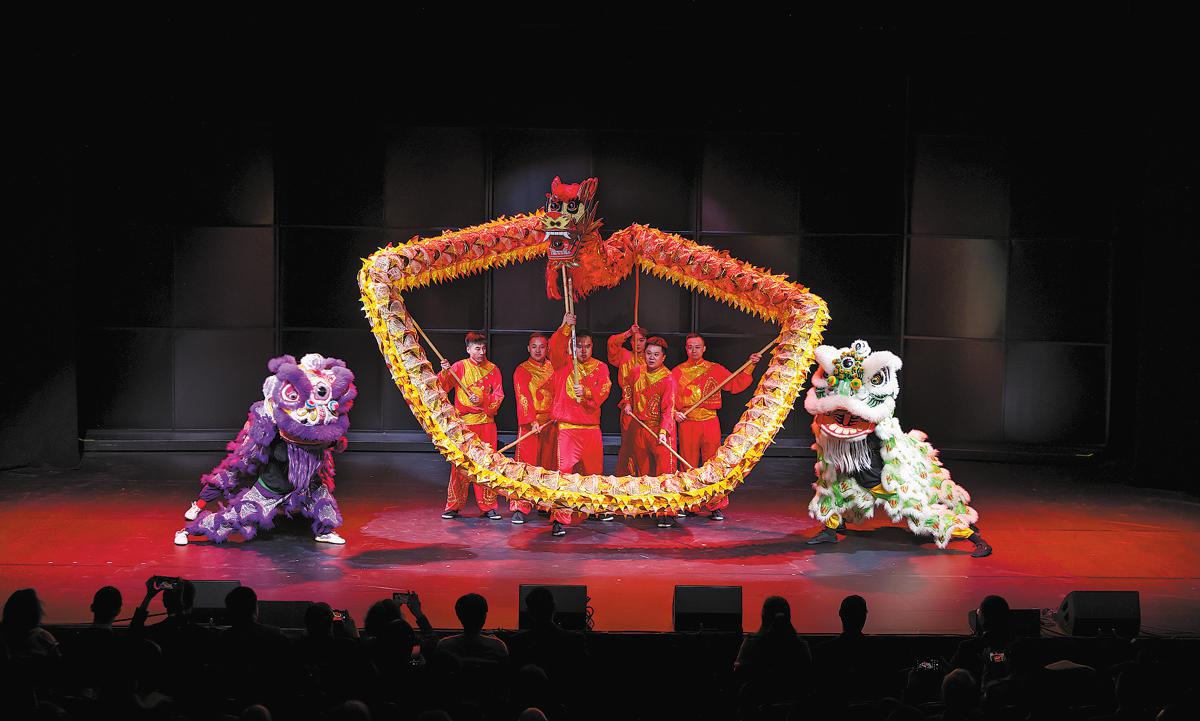
A Chinese dragon dance group and a Finnish lion dance team will perform together on Monday in Helsinki, Finland. [Photo provided to China Daily]
In a big show of cultural unity, Finland and Estonia are hosting a series of events to commemorate Chinese New Year (also known as Spring Festival in China), which falls on Saturday.
As part of the Happy Chinese New Year, 15 events will be held in the two European countries, including six performances, three photo exhibitions and three workshops introducing Chinese culture.
The festival, which begins Monday and continues until Saturday, features Beijing’s folk artists, dancers and musicians.
Liu Weizhi, deputy director of the Beijing Overseas Cultural Exchange Center, which organized the event, said Lunar New Year celebrations have become an annual program in both countries. Finland will host the 18th “Happy Chinese New Year” while Estonia will host the 15th.
“This Spring Festival marks the beginning of the Year of the Dragon, a symbol of courage, vitality and good fortune in traditional Chinese culture.…There are many elements of ongoing events in both countries that feature mythical creatures.” ” said Liu.
Helsinki, the capital of Finland, and Beijing became sister cities in 2006, and in 2007 Helsinki hosted the first “Happy Chinese New Year” event. One of his highlights was a dragon dance by a Beijing artist featuring his two 18 meter long “dragons”.
Like the lion dance, the dragon dance is also a Chinese folk art in which performers use sticks to control the dragon.
The lead performer deftly raises and lowers, prods and sweeps the dragon’s head, creating a mesmerizing visual spectacle. All performers work together to manipulate the dragon’s body and synchronize its movements with the rhythmic beat of the percussion instruments played by the accompanist. live band.
“Since 2007, artists from Beijing have been visiting Finland to teach dragon dance to local people interested in Chinese folk art,” Liu said.
In 2019, a 10-day Dragon Dance Workshop was held in Helsinki. “This year, local residents trained by Beijing artists are participating in the dragon dance show along with eight performers from Beijing,” Liu added.
Overseas Cultural Exchange Center project producer Di Tianyao said that in addition to dragon dance performers, Chinese folk musicians and handicraft artists, lantern maker Luan Shenwen and kite maker Zhang Lei will be joining forces with Finland. He said he participated in a New Year’s event in Estonia.
Musicians from the Inner Mongolia Autonomous Region demonstrate their folk instruments and techniques, including the molinkur (“horse-headed violin”) and the khomei (“throat harmony”).
The morin khor is a two-stringed violin, and its importance extends beyond its function as a musical instrument, as it was traditionally an integral part of the rituals and daily activities of Mongolian nomads.
Khomei, which means “root of the palate,” is a special vocal technique in which one person vocalizes multiple pitches at the same time.
Di said that in 2020, he took Haya, a unique band dedicated to creating world music based on Mongolian folk music traditions, to Finland during the Lunar New Year festivities.
“Haya received a great response from local audiences, especially young people,” he said, adding that Lunar New Year celebrations are returning to Finland after the pandemic and that local audiences will be introduced to “Inner Mongolia’s finer musical traditions.” He added that he aims to provide the following.
